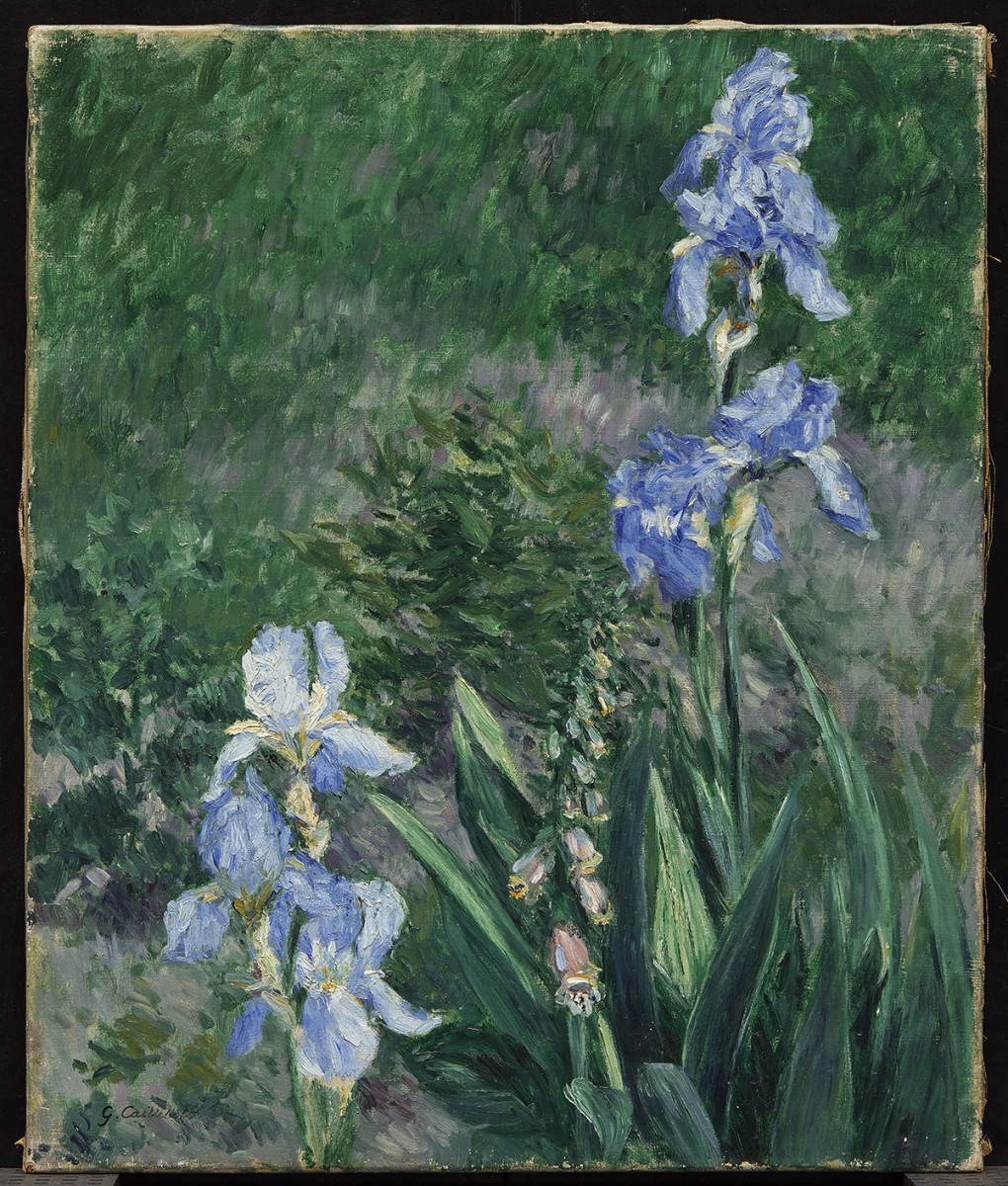Step inside Caillebotte’s garden
See Blue Irises, a rare masterpiece by Impressionist artist Gustave Caillebotte (1848-1893), on view now after being recently acquired.

Last week, the AGO announced an exciting addition to the Gallery’s collection of European art: Gustave Caillebotte’s masterpiece Blue Irises, Garden at Petit Gennevilliers. Painted in 1892, this exquisite garden scene is now on view on Level 1 in the Richard Barry Fudger Memorial Gallery (Gallery 125).
What makes this painting so special? For famed French Impressionist painter Gustave Caillebotte (1848-1893), his garden was no mere hobby, but a laboratory, a painting studio, and a work of art in its own right. His fascination with horticulture drove him to cultivate flowers, build greenhouses and even install automatic sprinklers. Featuring cool blue violet irises and a stem of a foxglove flower set against a green patterned background, this tantalizing peek into the artist’s garden is both a celebration of his passion and an avant-garde statement.
“The intensity with which Caillebotte cultivated and painted his garden is frequently compared to that of Claude Monet at Giverny, and their passion for the subject is captured in the letters that they wrote each other,” says Dr. Caroline Shields, AGO’s Associate Curator and Head of European Art. She added that “Caillebotte’s garden paintings mark a crucial moment of collaboration and experimentation, where we see him engaging with avant-garde trends.”
Why is Caillebotte’s work so rare? Well for one, Caillebotte, who was independently wealthy, was both an artist and patron, simultaneously funding and organizing several of the original impressionist exhibitions and exhibiting alongside Monet, Pierre-Auguste Renoir, and Edgar Degas. He had no need to sell his paintings during his short lifetime, a fact that accounts for their relative scarcity.
Best known for his highly realistic paintings of urban Paris, including Le Pont de l’Europe (1876) – which you may remember from our recent Impressionism in the Age of Industry exhibition – he moved permanently to the Paris suburb of Petit Gennevilliers in 1888, devoting himself to the cultivation and painting of his gardens. Caillebotte died young and in his will left a collection of 69 Impressionist masterpieces, painted by various artists, to the French government: They would, in turn, form the core of the Musee d’Orsay’s collection of Impressionism.
Famed for his unique use of perspective, Caillebotte uses various brushstrokes and patterns—thickly worked impasto for the irises, short dashes for the foxgloves, and long smooth sweeps for greenery—to push the flowers forward, giving the viewer the sense they are kneeling in his garden. His work is a vital piece in the story of Impressionism, as his use of close cropping and patterned backgrounds provides the basis for abstraction at the hands of Matisse and others. Had Caillebotte lived another forty years, we can only imagine what might have been.
So this long weekend, take a break and sit among the flowers. Caillebotte would surely approve. Blue Irises, Garden at Petit Gennevilliers is located on Level 1, in the Richard Barry Fudger Memorial Gallery (Gallery 125).
Tune in below for a more in-depth analysis of Blue Irises with Dr. Caroline Shields.
Admission to the AGO Collection and all special exhibitions is always free for AGO Members, AGO Annual Pass holders and visitors 25 and under. For more information, please visit the website.
